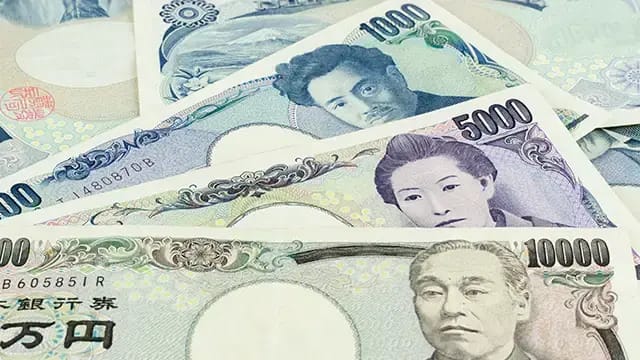Key Points:
The Japanese Yen (JPY) stays firm against the U.S. Dollar amid risk-off sentiment.
Broadening inflation in Japan and dovish Fed expectations are narrowing the rate gap.
Ongoing tariff tensions and real wage data continue to tilt the market bias toward JPY.
Yen Resilience Continues as Safe-Haven Demand Holds Firm
The Japanese Yen isn't just bouncing back, it’s defending ground with conviction. Despite occasional bouts of profit-taking or mild USD recoveries, the JPY remains supported as global markets digest the economic fallout of President Trump's sweeping reciprocal tariff measures.
While Japan’s own exposure to tariffs raises some concern, broader market psychology is working in favor of the Yen. With global equities mixed and bond yields continuing to slide, traders are leaning into safety, and that puts JPY right back in the spotlight.

Japanese Yen Futures
Even the Japanese Yen Futures, reflects a steady climb within a well-defined upward channel, reinforcing the currency’s safe-haven status. Recent volatility has failed to break this structure, suggesting that investor confidence in the Yen remains strong. The continued pressure from geopolitical uncertainty, tariff disputes, and rising recession risk is keeping demand elevated. As long as global uncertainty and recession fears persist, the Yen is likely to remain a magnet for safe-haven flows, particularly if it holds above the midline of this ascending trend.
Why JPY Has Fundamental Backing
This rally isn't just panic-fueled, it’s structurally supported. According to recent bond market data, the 10-year rate differential between U.S. Treasuries and Japanese Government Bonds (JGBs) has narrowed by nearly 60 basis points since February. That kind of compression doesn’t just happen without macro firepower.
Adding to that, a Goldman Sachs research note upgraded the risk of a U.S. recession from 20% to 35%, citing tariffs and inflationary pressure. Their revised forecast includes:
Inflation: 3.5% for 2025 (well above Fed target)
GDP Growth: Cut to just 1%
Unemployment: Forecast to rise to 4.5%
This backdrop points to one thing: The Fed will likely ease, while the BoJ has room to continue normalization.
Inflation, Wages, and Tariffs: The Macro Trifecta Behind Yen Strength
There’s more to this JPY rally than panic headlines. Under the surface, macro dynamics are shifting.
On Monday, Japan’s nominal wages jumped 3.1% YoY for February, significantly higher than the downwardly revised 1.8% for January. While real wages declined by 1.2%, signaling inflation’s pinch, the underlying wage growth supports the idea that Japan’s economy is finally breaking its decades-long deflationary grip.
Backing that up: Tokyo’s consumer inflation remains sticky at 4.3%, and the 2025 spring wage negotiations came in hot, with a 5.47% wage hike average across major corporations. This solidifies expectations that the Bank of Japan (BoJ) is not just done with ultra-accommodation, but could continue hiking gradually.
In contrast, across the Pacific, the U.S. Federal Reserve is facing an entirely different narrative.
Trump Tariffs Stir Global Worries and Fuel Yen Buying
The U.S. President’s reciprocal tariff salvo, slapping broad levies on goods from trading partners and threatening an additional 50% tariff on Chinese imports, has set off alarm bells around the globe.
The escalation, especially in a high-inflation, slow-growth backdrop, risks tipping economies toward a trade-induced recession. Unsurprisingly, risk-off sentiment deepened and bond yields fell, particularly in the U.S., where the 10-year Treasury yield dipped toward the 4.0% handle.
This yield slide is eroding the long-held interest rate differential between U.S. and Japanese assets. With Japan inching higher on the rates front and the U.S. now pricing up to four Fed rate cuts by December, the monetary policy divergence narrative has flipped.
Fed’s Positioning Adds Pressure on the Dollar
Federal Reserve Chair Jerome Powell recently stated that the central bank is in no rush to cut, emphasizing the need for clarity. But markets aren’t buying the stoic stance. With tariffs potentially pushing inflation higher but growth lower, investors believe the Fed will be cornered into action.
More dovish commentary from other Fed members, including San Francisco’s Mary Daly and Vice Chair Michael Barr, has reinforced this belief. Rate cut bets for June are climbing, and bond markets are flashing signals that the tightening cycle might be over.
Trump, for his part, has called for immediate rate cuts, arguing that the economy is robust enough to handle them, even as trade tensions stir economic unease.
Technical Analysis: USD/JPY Struggles Below Resistance as Sellers Return

USD/JPY (Daily Time Frame)
USD/JPY daily chart shows the pair trapped in a fragile recovery after an aggressive sell-off last week. Price action has rebounded off support near the 146.50 zone, but bulls are struggling to sustain momentum. The rejection from the 148.30 area, just below previous resistance and a breakdown zone, reinforces the downside bias, especially as the pair remains below the descending trendline and key supply zones.
Despite a short-term bounce, the lower highs pattern remains intact, and the RSI is hovering below 50, showing momentum is still with the bears. Unless the pair can reclaim and hold above 148.30–148.70 with strong volume, the current uptick may be nothing more than a technical correction.
As risk-off sentiment lingers and interest rate divergence continues to favor the Japanese Yen, traders should watch for renewed selling pressure, especially if price fails to stay above 147.00. A sustained move back below 146.50 could re-expose deeper supports near 144.60.
What Traders Should Watch This Week
There are no major U.S. economic reports due Tuesday, but FOMC meeting minutes on Wednesday and CPI data on Thursday could significantly sway sentiment.
Scenarios to Monitor:
If CPI comes in hot, the Fed may resist cuts, supporting USD short-term.
If CPI softens, especially amid dovish FOMC minutes, expect a renewed rally in JPY, gold, and bonds.
Final Thoughts
The Japanese Yen’s strength is not a blip, it’s a macro-backed shift. From rising inflation and wage growth in Japan to narrowing global rate gaps and souring sentiment over U.S. tariffs, traders now see JPY as a solid safe-haven again.
USD/JPY’s bearish bias remains intact below 148.00, and unless upcoming U.S. data surprises to the upside, the market seems poised to push toward multi-month lows.
For forex traders, this is a moment to align with the momentum, not fight it.




